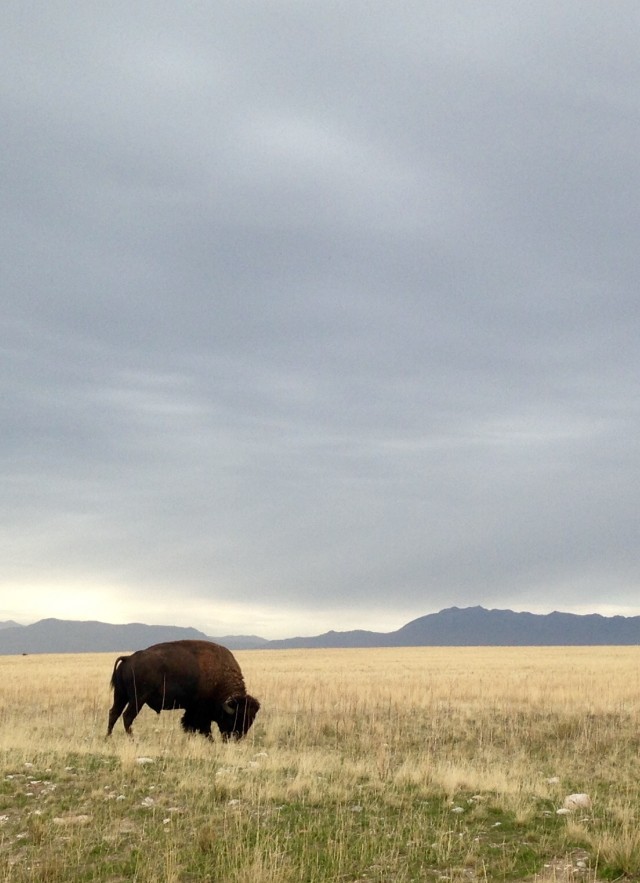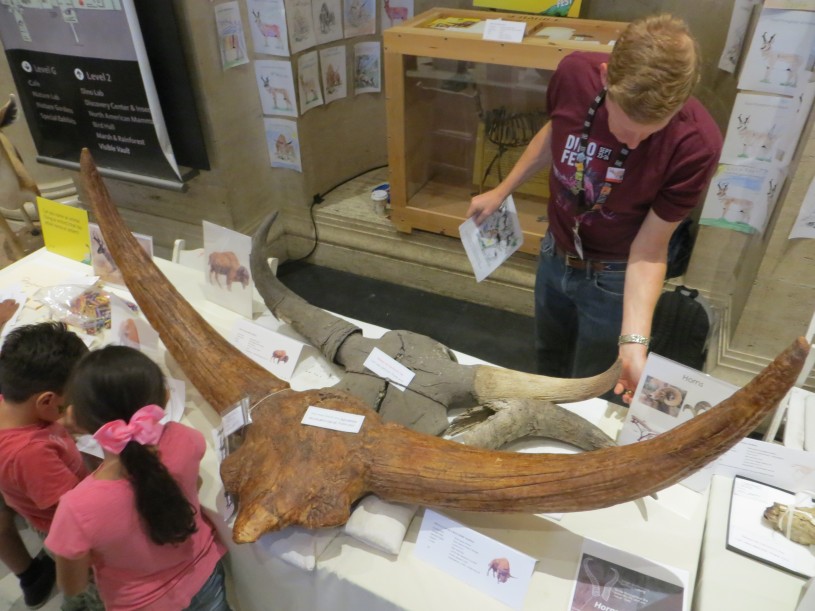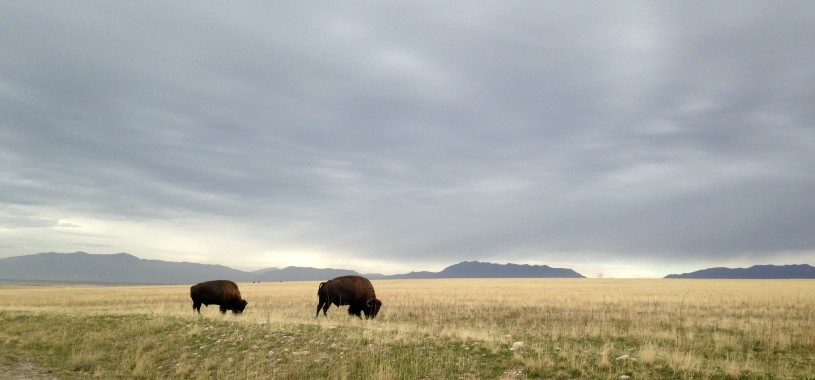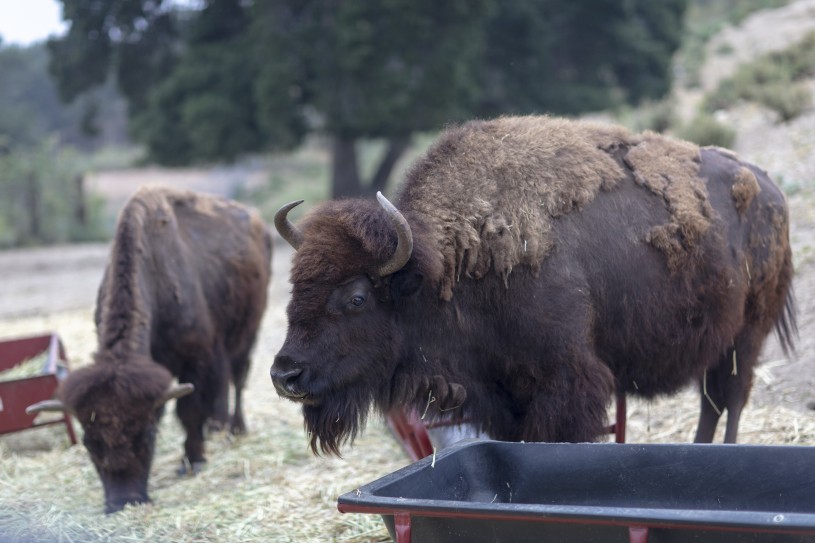An American Icon, Once Endangered
The natural history and near extinction of the most American of mammals

The history of the bison in North America is a big story, hundreds of thousands of years long and counting. As the largest land mammal on the continent, the once-prevalent herds were integral to the survival and culture of the people who lived on the land long before immigrants arrived.
The United States’ official national mammal, the bison is also an iconic symbol of the American frontier, a window into how Americans think about conservation and the West. The near extinction of the species weaves these narratives together. With specimens at La Brea Tar Pits and NHM, as well as living bison at the Hart, it’s a story uniquely captured by our museums.
Making it in America: Bison at La Brea Tar Pits

“The story of the bison is really the American story, the immigrant story,” according to Vertebrate Paleontologist and NHM Exhibition Developer Matt Davis. Ancestors to modern bison crossed the Bering Land Bridge around 240,000 years ago and thrived. “Bison are indicator fossils that help us tell geological time,” says Dr. Davis, meaning that when a paleontologist finds one, “she knows that she is digging in the Rancholabrean North American Land Mammal Age,” the age named for the La Brea Tar Pits. There are just over 13,000 catalogued specimens here, says La Brea Tar Pits Collections Manager Aisling Farrell, and “Bison are the most common large herbivore found there, of which 48 are noted as the larger Bison latifrons and the rest are Bison antiquus.” The abundance of bison fossils in the Tar Pits reflects the extent of the species’ success in their new home.
“Bison antiquus and Bison occidentalis are found in some of the oldest archaeological sites in the Americas and were a target for Paleoindian hunters on the Great Plains after the extinction of the mammoth, ” says Dr. Amy Gusick, NHM’s Associate Curator in Anthropology. When humans first arrived on the continent, believed to be 13,200–15,500 years ago, they would have found a landscape shaped by the hooves of 20–30 million migrating bison. Vast waves of bison enveloped the landscape, supporting whole cultures of native peoples for thousands of years.
Outside the Diorama: Bison at NHM

The American bison—one of the last holdouts from the Ice Age—was nearly driven extinct in the late 1800s. The government of the United States embarked on a campaign to devastate the Native American populations of the plains as it expanded Westward, targeting bison for intentional extinction.
“Bison remained an integral aspect of the lifeways of Native American tribes on the Great Plains,” says Dr. Gusick. “They not only provided food and skins for clothing and warmth; they became an important part of the cultural and spiritual spheres of numerous Native American tribes.” Driving bison to extinction was a means of extinguishing a way of life.
By the 1920s, museums had begun creating diorama halls to bring public awareness to America’s quickly vanishing large mammals. "Museums sent out expeditions to the West to find the last remaining big animals in the wild so that they could be preserved and put on display in their native habitats. They wanted visitors of the future to realize what we had lost.” This was a dramatic shift in museum displays, according to Davis.
Smithsonian taxidermist William T. Hornaday spearheaded the conservation effort that brought bison back from the brink of extinction. Dioramas like NHMLAC’s played an important role in raising public awareness. According to Shannen Robson, Collections Manager in Mammalogy, the museum's records indicate some of our bison specimens are from the Antelope Island herd in Utah. "This herd is one of the oldest in the country, established on this island in the Great Salt Lake in 1893, and still exists today.”
Our diorama halls and collections connect directly to conservation efforts beyond the museum’s walls. “It's a genetically important group because it has a separate lineage from some of the other bison herds in the U.S., making it valuable for breeding programs.” As repositories of genetic information and vehicles for inspiration, museums like NHM invigorate the conservation movement.
Icons of the West: Bison at Hart

In 1962, Walt Disney gave what CBS Radio’s Ralph Story described as “the eight meanest, largest, and most expensive animals in the film capital,” to the William S. Hart Museum. The animals were bison, of course, and their descendants can be seen lounging in the video, brought to Hart’s property long after his death. An animal lover and icon of the West himself, Hart ensured his home would be used as a sanctuary for animals, even after Hart's passing. In some ways, he was ahead of his time.
Magdalyne Romero, Education and Volunteer Coordinator at the Hart Museum, thinks it’s a perfect fit: “As a child, Hart lived on the Great Plains, and spent a lot of time (and formed very close relationships) with the Sioux. The Sioux taught him to ride horses, to respect the land and animals, and had a very positive impact on his life. It cannot be overstated how important bison are to the Sioux, and the Sioux were incredibly important to Hart.” It’s impossible to say what Hart would’ve thought about it, but Romero sums it up nicely: “Bison are an iconic symbol of the West, and with William S. Hart being an iconic western star, having a bison herd living on the grounds could not be more perfect.”


The bison at Hart featured in this video connect our three museums, adding to the hundreds of thousands years long story that nearly ended in a matter of decades. They are living reminders of the responsibility we share to our cultural and natural worlds.